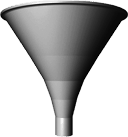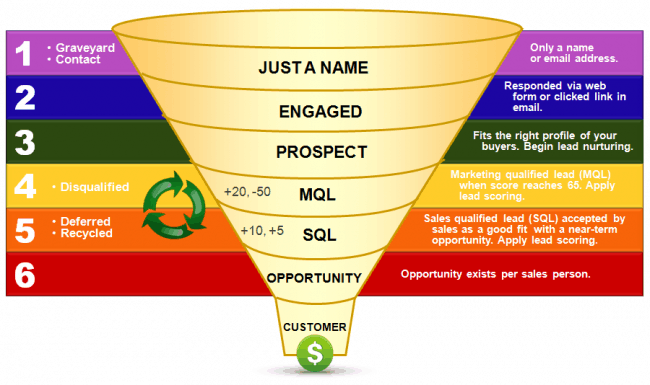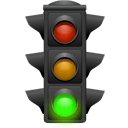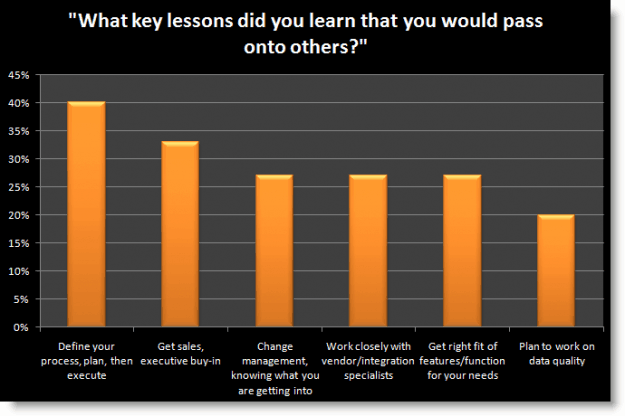Sales Pipeline Stages
 Marketers spend a lot of time on inbound marketing activities to drive traffic to their site; investing in SEO, thought leadership, trade shows, blogs, social media, and advertising are a few examples of inbound marketing. As awareness builds and new contacts enter the sales funnel it is important businesses define the right sales pipeline stages to manage, nurture, and distribute leads. Sales pipeline stages tend to vary across companies; however, we’ve established 6 sales pipeline stages appropriate for most businesses. Here at Lead Liaison, we use these exact stages to manage our business. Let’s explore how we’ve defined the 6 stages in the sales pipeline.
Marketers spend a lot of time on inbound marketing activities to drive traffic to their site; investing in SEO, thought leadership, trade shows, blogs, social media, and advertising are a few examples of inbound marketing. As awareness builds and new contacts enter the sales funnel it is important businesses define the right sales pipeline stages to manage, nurture, and distribute leads. Sales pipeline stages tend to vary across companies; however, we’ve established 6 sales pipeline stages appropriate for most businesses. Here at Lead Liaison, we use these exact stages to manage our business. Let’s explore how we’ve defined the 6 stages in the sales pipeline.
The 6 sales pipeline stages are
1. Just a Name
2. Engaged
3. Prospect
4. Marketing Qualified Lead
5. Sales Qualified Lead
6. Opportunity
 Prior to adding a lead to your sales pipeline we suggest tracking the lead source. Marketing automation technology can help you identify whether the lead source is from a paid search, SEO, trade show, facebook, general website visit or other source. Lead tracking will help you report on marketing ROI down the road. Let’s briefly explain each of the sales pipeline stages.
Prior to adding a lead to your sales pipeline we suggest tracking the lead source. Marketing automation technology can help you identify whether the lead source is from a paid search, SEO, trade show, facebook, general website visit or other source. Lead tracking will help you report on marketing ROI down the road. Let’s briefly explain each of the sales pipeline stages.
Just a Name
As the name implies, these records are just a name. If you have the person’s name or email and no other insight they are simply a record, or a person, in your database. Often times marketing and sales have conflicting definitions of a lead. Separating these people from your marketing defined leads and sales defined leads helps avoid confusion over what is a lead and what is not a lead.
Engaged
When a person finally responds to an inbound marketing program they are moved to the sales pipeline stage, Engaged. For example, the person could click a link in an email campaign or fill out a web form to become engaged. Please note that just because someone is in the engaged status does not mean they are a lead as there’s a good chance they’re not yet ready to speak with sales. We suggest using marketing automation technology to automatically respond to the person with a personalized message a few hours after they respond.
Prospect
If the person meets the ideal profile of a buyer they become a prospect. Ideal profiles could be determined by demographics (location, job title) or firmographics (industry, company size, revenue). Again, we suggest using a marketing automation system to help qualify if someone should become a prospect. Lead scoring, a feature of most marketing automation systems, provides a mechanism to automatically qualify leads using an incremental scoring system. For example, add 10 points if their companies revenue is more than $50M and/or add 20 points if they are a Vice President. Conversely, scores can be decremented. For example, subtract 50 points if the person is a student.
Once the person becomes a prospect start lead nurturing. Lead nurturing is the process of creating meaningful dialogue with the prospect at each stage of the buying process. See the post under lead nurturing programs for 5 examples of this dialogue. The beauty of lead nurturing is that different lead nurturing “tracks” can kick in according to the prospects online activity and/or interaction with other marketing assets.
Marketing Qualified Lead (MQL)
We suggest using the score generated from your lead scoring programs to determine if a prospect makes it to the sales pipeline stage as a marketing qualified lead. Sales pipeline stages leading up to this point do not require human interaction; interaction has been personalized using lead nurturing technology. In our lead management model, we use a scoring threshold of 65 or higher. When the prospects lead score crosses that threshold we change the lead status to a marketing qualified lead.
At this stage in the sales pipeline, marketing will pass the lead over to sales. In some businesses marketing may have a sales development team or inside sales team manually qualify the lead further via a phone call or some other type of screening. At Lead Liaison, we do not change the status of the lead until sales accepts the lead and determines it’s qualified. A lead may also be put into the “Disqualified” status if there’s no match whatsoever.
Sales Qualified Lead (SQL)
Once sales accepts a lead and deems it qualified the lead becomes a sales qualified lead. Leads at this stage typically require high-touch, personalized interaction. Sales will call the lead to further qualify them. At this point, sales can move the lead to one of three statuses: Deferred, Recycled, or Opportunity. If the lead is not quite ready to buy sales should recycle the lead. Recycling puts the lead back into a lead nurturing program managed by marketing until the lead is sales-ready. Alternatively, sales can move the lead to a Deferred status if no additional lead nurturing is warranted and there doesn’t appear to be an opportunity. If marketing, and the marketing automation system, has done its job the lead should be moved to the Opportunity status. When the lead becomes an opportunity it will have its own opportunity sales cycle.
This is the most important stage of all sales pipeline stages since quick response to hot leads must occur. We strongly recommend using an alert system to make sure marketing and the rest of the organization holds sales accountable for follow up. A marketing automation system will help you setup a closed-loop accountability process similar to the one below:
1. Send an alert via email to the responsible sales person.
2. If within 24 hours the lead status has not been changed send an alert reminder to the sales person.
3. If another 24 hours pass, send another alert reminder to sales and copy the sales person’s manager.
4. If another 24 hours pass, send the same alert to sales and the sales persons manager but this time copy a C-level executive.
This closed-loop process ensures no lead falls through the cracks while holding sales accountable for follow up and providing marketing peace of mind as the person seamlessly transitions from marketing responsibility to sales responsibility.
Opportunity
The Opportunity status is important for marketing to measure cost per conversion, cost per lead, and effectiveness of various lead sources. Today’s marketer is being measured on results, not activity (email opens, web visits). ROI analysis on a person’s path through the sales pipeline stages from Just a Name through to Opportunity then Customer is vital to keep a pulse on revenue generation.
Graveyard and Contact
At any of the sales pipeline stages a person can be moved to the Graveyard or Contact status. Graveyard status is a person record with a bad email or incorrect contact information. Usually, this occurs if the person has changed jobs. Contact status is when a person is converted out of the sales pipeline stages into a contact management database and is not a lead. This typically occurs when the person is a partner, reseller, or just a contact in your system that you never plan to sell to.
Contact Lead Liaison to see how our revenue generation software can help you setup your lead management process to distribute, qualify, and nurture leads through your sales pipeline stages.
We welcome your feedback, comments and suggestions. What sales pipeline stages to you employ? How do you manage your stages?
To be alerted of future posts, please click on the RSS button.













